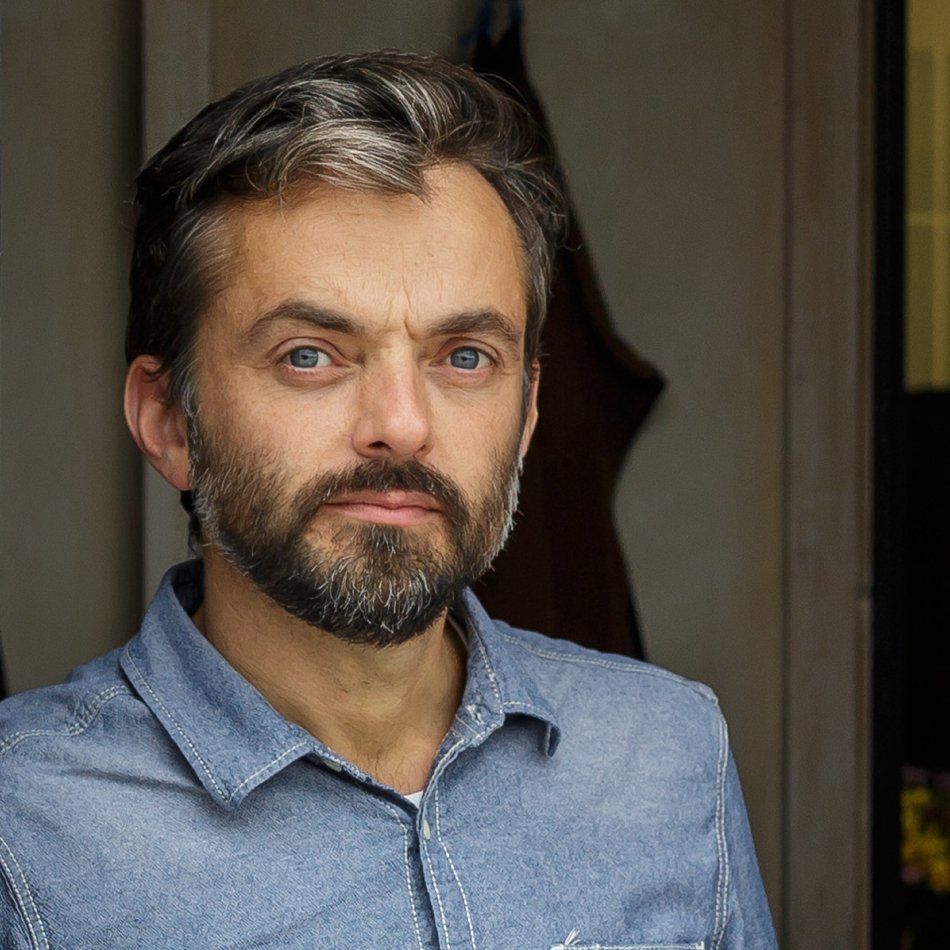
Finding Familiarity in the Unknown: The Urban Alienation and ‘Interloping Eye’ of Rural Architect Niall Maxwell
Sometime around the turn of the Century, Architect Niall Maxwell and his wife Helen decided they’d had enough of the rat race. They left London for rural Wales, initially just as an extended break from the City, but ended up buying a farm and establishing the Rural Office for Architecture.
Their stunning projects, as the firm’s name suggests, are largely pitted against the glory of bucolic landscapes. As such, they have taken on a character that flows from nature and nods reverentially to the rustic utilitarianism of farm buildings. Nick Mitchell Maiato caught up with Niall to talk about accidentalism and serendipity as a working methodology.
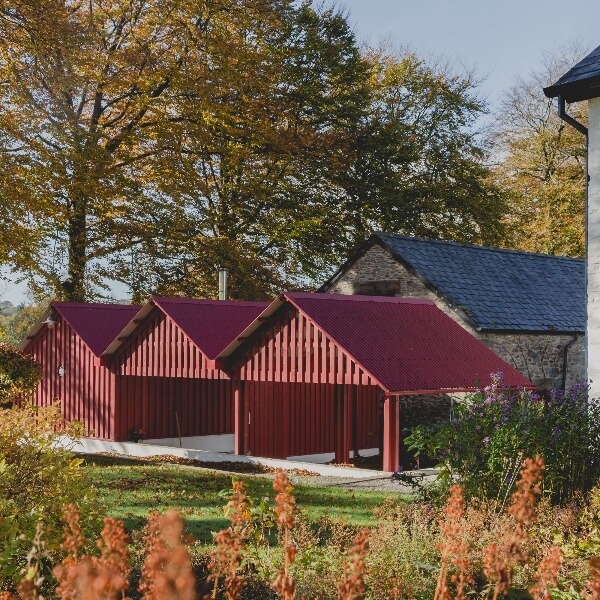
For most people, the idea of quitting something has negative connotations. For you, it was a gateway to personal, professional and visionary accomplishment. To what degree do you attribute your success to knowing what you didn’t want from life?
I’ve thought about this question a lot recently as I have been preparing a new talk which I’ll be giving over the winter. My ‘escape’ to the country was in part a journey to understand the allure of the countryside when living in an alien urban environment. It ended up being more about self-analysing my need for space, both physically and mentally. This liberation led to a personal enlightenment which has defined the way I think and look at things.
It’s kind of brilliant to hear an Architect refer to the urban environment – essentially a ‘man-made’ environment - as ‘alien’. Do you think that separates you from a lot of your contemporaries? Is that how you define your ‘enlightenment’ – as having realised that?
I think the alien is about understanding what makes you tick and what you need to be surrounded by in order to thrive. I’m sitting in an apartment in Manchester writing this and this city feels totally at odds with my sense of place and how I establish value and hierarchy. I wouldn’t wish to judge others, but I suppose through context I am perhaps coming at things from a different position. So, your question about enlightenment is reflective of this reaction to the urban, where I can only see the many negatives both in terms of human behaviour but also organisation constructs.
It was never your intention to focus largely on rural architecture. Do you enjoy the idea of being a kind of conduit through which ideas are channelled by chance? Is it more gratifying (or, dare I say, soulful) to happen upon challenging circumstances than to actively seek them out?
There is a slight amusement about being seen as ‘the rural guy’, which appears to have defined the way the business has evolved. I’m reminded of the Lemonheads song “The Outdoor Type” as the lyrics do tend to sum up this irony. I’m impractical and in many ways not cut out for rural life but having learnt the hard way I’m probably an ‘expert’ in advising woolly dreamers on the pragmatism involved in living and working in the countryside.
This happenstance does lead you to think outside the box and makes you more versatile as a designer. Pragmatism becomes a key tool, and this is something that has allowed us to take on a broader range of commissions and consultancy which now involves offering strategic advice to organisations and institutions as well as designing and delivering buildings.
Car Button Cloth! The great underappreciated Lemonheads record. ‘Woolly dreamers’ is very evocative. The work you’ve created since moving to Wales, though, is very much a realisation of woolly dreaming, isn’t it? Part rural reality, part fantasy?
The interloper’s eye, stumbling into a world he doesn’t understand but tries to make sense of. Architecture becomes the manifestation of this discourse.
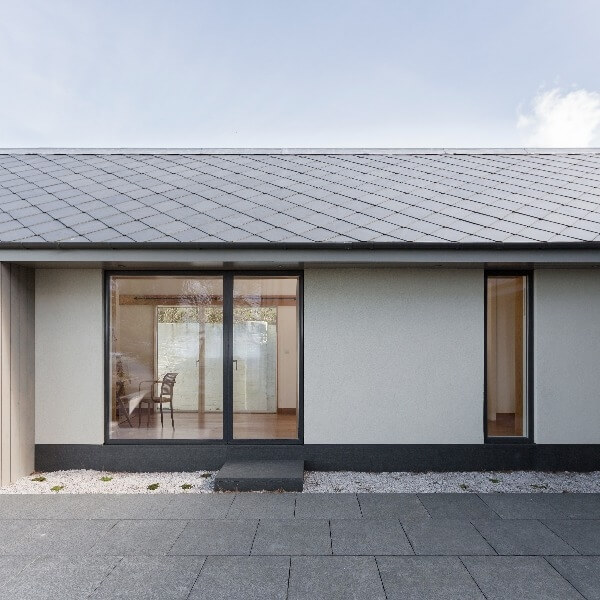
Returning to rural ‘happenstance’, your new pavilion building at Alma Grange is a feast of geometry. Clean, yet contrasting, lines dominate the simple, functional exterior. On the one hand, it’s pure formalism; on the other, it captures the essence of accidentalism in rural architecture. Are you inspired by the almost art brut approach to countryside structures?
The ‘accidentalism’ you refer to is very interesting, as since we moved to rural Wales we’ve spent our time documenting such structures and settlements. In part this was to make sense of it all, but after a while you realise the value it provides to your own design practise. I don’t think our work yet is loose enough to express the haphazard nature of what we document, but we’re constantly referring to the eccentric nature of non-design evident in many farmsteads and small-scale settlements. In some ways it reminds me of our analysis of Voysey’s work, and that of other Arts & Crafts architects, struggling to decode his elevations and their applied order, scale and hierarchy.
Alma is subconsciously a reference to many things we have ‘soaked up’ over time. There was one building in particular that we came across in North Wales, where every building element was made of slate, from the structure, to the cladding, to the roof slates (which were also diamond patterned). It showed the versatility of the material but also the ingenuity of the maker.
Charles Voysey was just one such architect who found form from his materials, though, too, wasn’t he? He worked with what was affordable and that, in turn, determined his stylistic selections. Do you find it necessary to try to remove yourself from that inspiration (which creates a somewhat reflexive version of Voysey’s approach – inspired by the inspired) and get back to ‘the source,’ as it were? Is that even possible, or are you bound somewhat by your appreciation for the profession?
No, I think sometimes these things can be over thought. Inevitably, pragmatism and opportunity become the two defining outcomes with the way we design. We’re on one hand playing with the familiar, the uncanny, whilst also trying to move things on subtly. The latter ending up being a response to more perfunctory requirements such as regulations and availability/affordability of materials, etc.
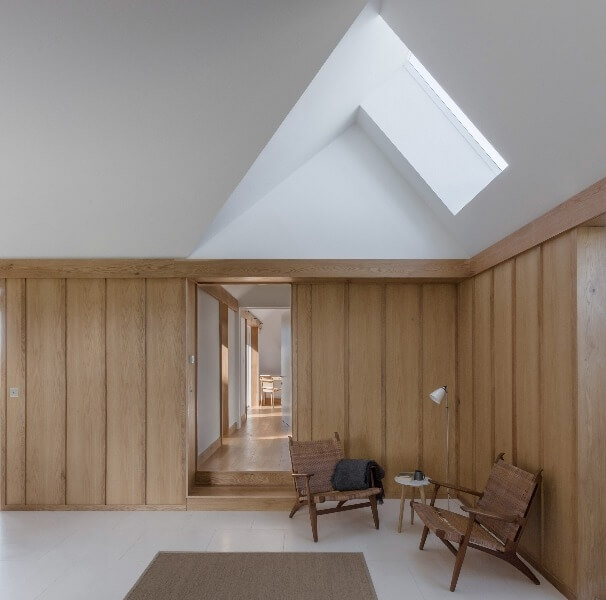
You’ve developed a prototype for a thermally efficient self-assembly plywood studio that’s easily assembled by two people and requires no planning permission. How much of what you do is driven by the desire to simplify and how do you balance that with aesthetic considerations?
This project evolved out of the need to create affordable space for my wife, who is a painter. Many of the creative friends we’ve got to know over the years are working out of poorly constructed badly lit studio spaces in remote rural locations, so we were looking at ways in which we could design affordable accommodation that could be built by people with limited skills, and would require little or no heating due to their thermal specification.
The process of simplification is driven by the adopted technology and a desire to rationalise the volume of material being used and to be efficient with waste. The aesthetics become a celebration of that process rather than being hidden away.
I love this and it goes a long way toward defining your approach and ethos.
Such systems only work once you reach a certain economy of scale, but what’s been encouraging is that many other people had been thinking the same way and there are now a range of similar products that have entered the market. We decide to stop developing this as we realised it wasn’t a key objective of our practice.
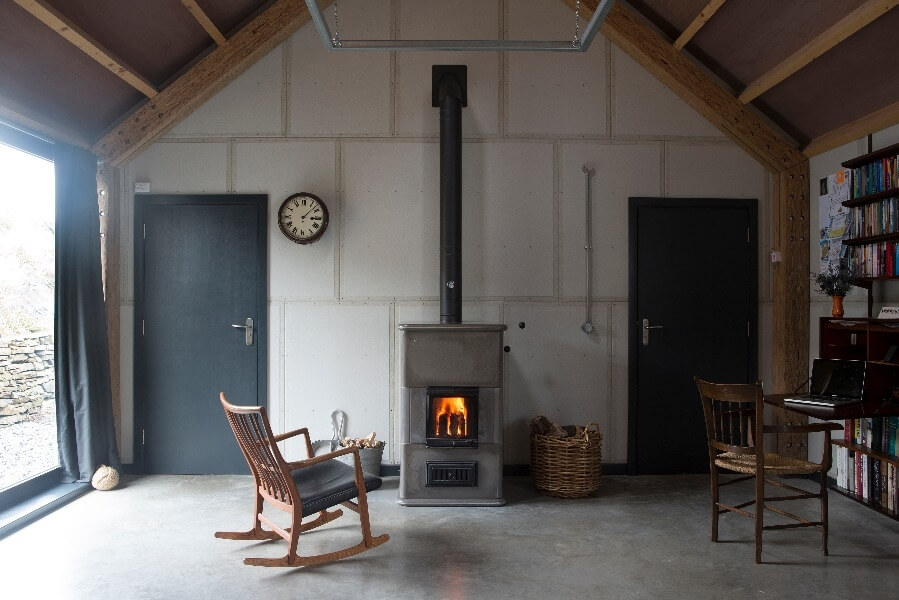
There are 66 million people in the UK. Space and energy efficient design are hot topics in contemporary urban architecture. As someone who’s concerned with environmental impact in your work, are you ever tempted to head back toward that world?
We’re starting that process by working with developers and local authorities in non-metropolitan areas of the country. The world has seen a focus towards urbanisation but I’m firmly of the view that the most developed nations will reverse that trend in the coming decades due to the development of technology, communication and logistics. Smaller service centres and villages need to address the issue of sustainable densification not sprawl, but at present there is no commercial appetite for the housing sector to address this. I’m interested to see what Rem Koolhaas’s new exhibition ‘Countryside, The Future’, at the Guggenheim New York, will tell us about what lies in store.
In 2017, you won the RIBA House of the Year prize for your collaboration with James Macdonald Wright on the stunning Caring Wood project in Kent. There’s a satisfying sense of step-change that traditional practices, such as sourcing handmade peg clay tiles and coppiced chestnut cladding, can win the highest prize within an industry obsessed with the new, isn’t there?
I think Caring Wood was a one-off and very much an opportunity for us to explore and experiment with ideas we had developed in practice. However, we’re not alone in exploring the need for architecture to become more grounded in its context and setting. The issue is how you work with these traditions and apply them to the contemporary standards and needs of modern life. When once such crafts were affordable and abundant, they are now specialised and expensive, so we’re back to the issue of pragmatism, and how you find the balance.
So, do you foresee a step change coming and how do you think it will manifest itself, if so?
I think a step change will only come through policy and legislation. How do you tax craft? It will evolve out of a broader carbon footprint which will change behaviour and force industry to invest/value the local. Like anything, when incentivised industry responds – the profession can’t do that on their own.
To find out more about the Rural Office For Architecture, visit their website.